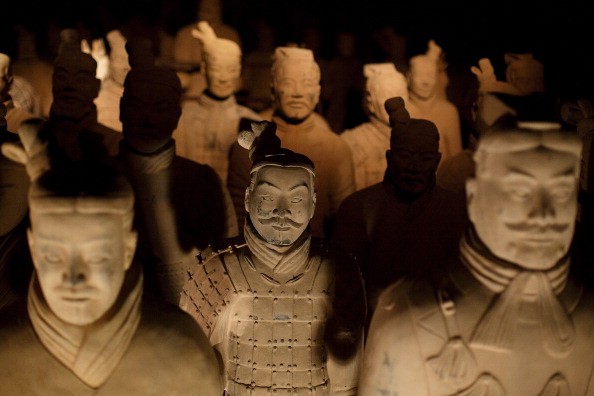Archaeologists have unearthed evidence suggesting that ancient Greece may have had a hand in the design the Terracotta Army, which could shed new light on ancient China's contact with the west.
The 8,000 warriors guarding the mausoleum of China's First Emperor Qin Shi Huang, which date back to the third century B.C., are likely to have been made under the guidance of a European sculptor and took influence from ancient Greek art.
An extensive study of excavation sites in Xinjiang Autonomous Region in northern China have revealed European-specific mitochondrial DNA, suggesting Westerners travelled, settled, and died there before and during the time of the First Emperor, according a report from the U.K. news site The Telegraph on Wednesday.
"We now have evidence that close contact existed between the First Emperor's China and the west before the formal opening of the Silk Road," she said, in a statement.
"This is far earlier than we formerly thought," said Xiuzhen, senior archaeologist at the Emperor Qin Shi Huang Mausoleum Site Museum.
The DNA in Xinjiang also suggest contact between China and the West around is 1,500 years earlier than currently accepted.
Experts say evidence of the contact can be in the style of the terracotta warriors, as China had no tradition of building life-sized human statues before then.
"The massive employment of sculpture in the mausoleum is totally unprecedented in Chinese tradition," Professor Lukas Nickel, chair of Asian Art history at the University of Vienna, told Fox News. "This makes it likely that the skills necessary came not from China but from the outside."
Nickel said the First Emperor's mausoleum may have been influenced by the arrival of Greek statues in Central Asia in the century following Alexander the Great, noting that a record written about a century after the death emperor stated that the sculptures in the tomb were intentional copies of other figures the Chinese had found at the Western end of the Chinese kingdom.
"I imagine that a Greek sculptor may have been at the site to train the locals," he added.
Additional evidence is found in bronze figurines of birds excavated from the mausoleum, which show manufacturing techniques from ancient Greece and Egypt that were previously unknown in ancient China.
"We now think the Terracotta Army, the acrobats and the bronze sculptures found on site have been inspired by ancient Greek sculptures and art," said Xiuzhen, in the statement.
Archaeologists also believe that the tomb complex is much larger than originally thought, spanning a vast area of nearly 38 square miles.
Previously, the site was estimated to cover 22 square miles. Remote sensing technologies and ground penetrating radar also indicate that the First Emperor's tomb lies beneath a pyramid and a huge structure with walls 476 feet long on each side and 45 feet high.
Tomb corridors were also found, which contained the concubines' burial chambers and living quarters, as well as a 216-foot-wide road leading to the site.
The full findings will be described in a BBC/National Geographic documentary to be aired later this month.



























